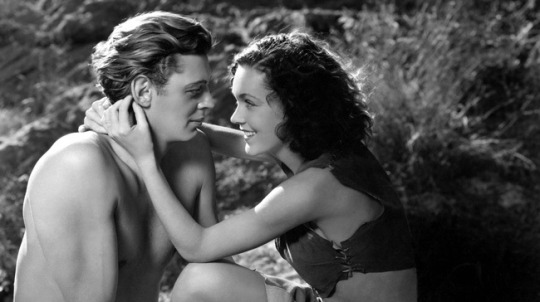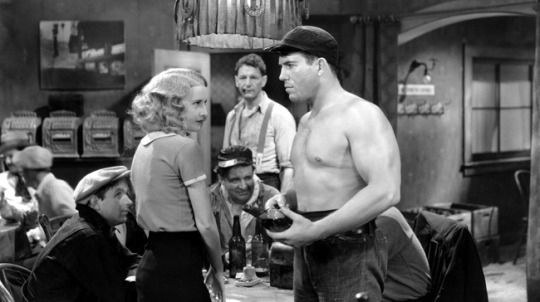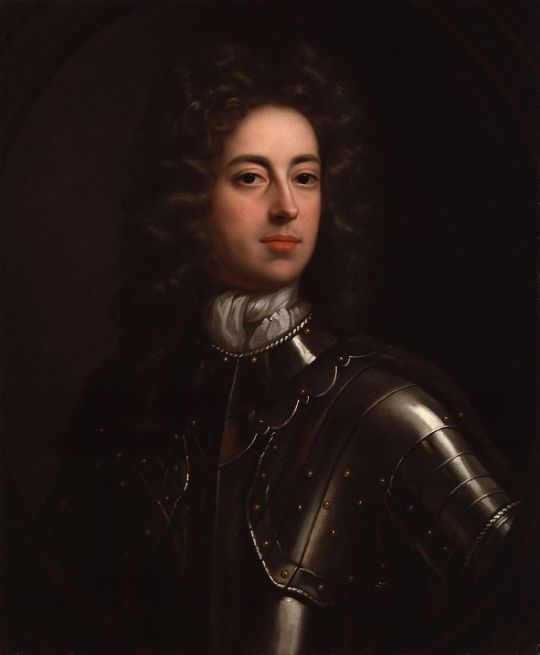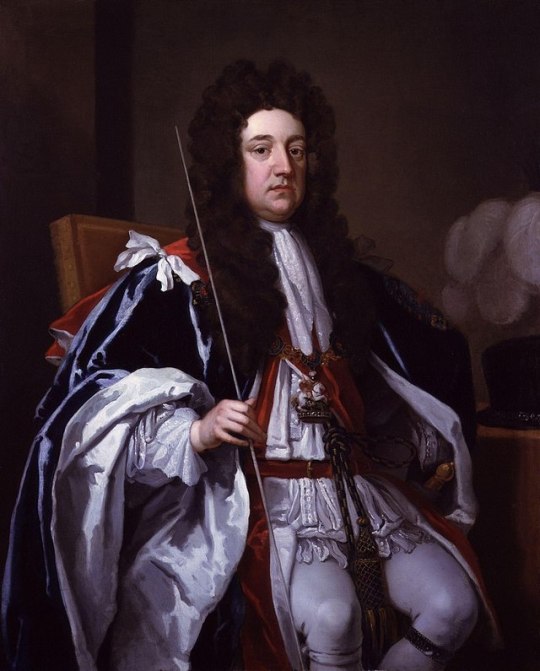#(pre the film being restored not pre charles II)
Text







current sexual orientation: tweedy, warm, intelligent, wry, ping-pong playing, whisky-drinking, poetry-quoting, motorbike-racing, gloriously red-headed here-on-earth-I-am-your-defending-counsel Doctor Frank Reeves [Roger Livesey: A Matter of Life And Death, Powell & Pressburger, 1946]
#I say CURRENT but in frank's case it is CONSTANT also ETERNAL#roger livesey#frank reeves#did I go see AMOLAD on the big screen AGAIN last night hell YES I DID#did I do a cry as usual yes I did#it was super cool watching it with pals who have not seen it before and could NOT believe the ambulance crash#so it is ridiculous that I have not made this gifset before#but to be honest#I giffed pretty much ALL this film back in the pre-restoration days#(pre the film being restored not pre charles II)#although sometimes it feels like the 17th century it's so long ago#and wow I am still not used to having NO SIZE LIMIT on gifs I remember the days we got excited when it went to 1mb#I celebrated by making an errol robin hood gif in big#anyway this film is as EVER a joy and always great to be reminded of how amazing it is also how queer it is#and beautiful and special and human and basically one of the greatest pieces of art ever made#my wee gifs
118 notes
·
View notes
Text
Film history: The Hays code 🎞 ✄

For more than thirty years, an ironclad system of regulation of cinematographic content put the professionals of the moment at the limit of their ingenuity in order to prevent their films from falling prey to censorship.
Despite being an undoubted period of repression, this need to avoid the scissors, brought out a whole series of resources, double entendres, veiled references. In certain cases and in genres such as comedy, it gave rise to the suggestive ability of not showing or not saying openly what was obvious. The Hays code was a well-known regulation that was in effect from 1934 to 1968 and was conceived by William H. Hays, a member of the Republican Party and the first president of the Film Producers and Distributors Association of America –MPPDA–.
The cinema, like all artistic expression, did not take long to generate controversy. In the midst of the twenties, to the controversial arguments that could appear on the screen, the scandals of actors and directors outside of it were added. The tabloid press of the time was abuzz with all its explosive tribulations, riddled with murder, drugs, or death.
The movie mecca was depicted as nothing less than a scene of depravity and immorality. Among the most notorious events, we find the alleged rape and subsequent death of the unknown aspiring actress Virginia Rappe at the hands of the comedian Roscoe Arbuckle. Also widely publicized was the divorce of the then famous Mary Pickford, from her first husband Owen Moore, while she was having an affair with Douglas Fairbanks.
With the purpose of avoiding government intervention and favoring self-regulation, the heads of the cinematographic studios decided to create in 1922 the MPPDA, later called the MPAA –with the end of World War II– or the Cinematographic Association of the United States. William H. Hays was named its president and given the mission of restoring the good image of Hollywood and, at the same time, dictating the morality of its films.
In 1929, with the help of the Catholic publisher Martin Quigley and the Jesuit priest Daniel A. Lord, the code of norms was developed and, after being revised by the study leaders, it was finally adopted by the MPPDA in 1930. At first this was called The Production Code and was later renamed for posterity as The Hays Code. In addition to some general sobering precepts, focused on preserving the morale of the films, a huge list of vigilance guidelines was drawn up that targeted sex, especially violence or blasphemy.

In this way, the scenes of passion were reduced to the minimum expression. Manifestations such as kisses and hugs should eliminate any trace of lust and, of course, any explicit scene. In particular the kisses became so chaste that they were even timed, they could only last a few seconds. Marriage as an institution also had to be protected, a sign of the moralising nature of the norms.
On-screen crimes had to be shown without showing all their brutality and the use of weapons was reduced to the bare minimum. The irreverent use of language, especially if it was perceived as an offense to religion, was eliminated. These are some examples of the restrictions that the code marked and that forced the filmmakers to avoid any obvious reference.
Other rules were also the most bizarre, especially the most curious have to do with the nude. In this sense, the woman, her dress or the lack of it; they were closely supervised.
Transparencies or fabrics that excessively emphasise the shape of the female body were not allowed and the navel should not be shown under any circumstances. Men were also a cause for censure, as it was considered lewd to show the hair on the torso and it was not advisable to expose it. These observations have to do with the more inflexible nature of the censors, but even though they were exaggerated, they left a long trail of puritanism that is still felt in American cinema today.

During its first years of validity, the code was observed with some permissiveness and this favored certain productions that managed to avoid its guidelines. In the midst of the Great Depression, studios couldn't afford any more losses, so they were initially reluctant to adopt a series of measures that directly affected popular genres, such as gangster movies or comedies. However, the threats of boycott by the Catholic sector of American society and the withdrawal of funds by some influential investors, forced the studios to abide by the code in force from 1934. These years were known as the Pre- Code Hollywood.
Some of the films that somehow circumvented censorship in these years were, among others, ‘The Blue Angel‘ (‘Der blaue Engel, Josef Von Sternberg, 1930) with a sensual Marlene Dietrich. Other examples include the movie (‘Baby face’, Alfred E. Green, 1933), with Barbara Stanwych openly using her charms to advance socially; or 'The Sign of the Cross' ('The Sign of the Cross', Cecil B. DeMille, 1932), centered on the time of Emperor Nero, played by Charles Laughton, shows its excesses in an overt way.

Several of these Pre-Code films suffered the burden of censorship after 1934. An example is the film 'A Farewell to Arms' ('A Farewell to Arms', Frank Borzage, 1932), starring Gary Cooper and Helen Hayes, it was shortened later on so that only its censored version remains. Other professionals affected by the code were the Marx brothers - known for the audacity of their dialogues - or some actresses, such as Jean Harlow or Joan Blondell, especially the latter was vetoed on numerous occasions.
However, some creators found somehow even within the severe surveillance of the code, an incentive to challenge their ingenuity. On many occasions, difficulties are a stimulus for those unwilling to yield before them.
That is why masters such as Ernst Lubitsch or Alfred Hitchcock knew how to circumvent censorship with their inimitable talent. His fantastic dialogues or the actions behind a closed door are two of the landmarks of Lubitsch's magic.
The famous sequence of the long interrupted kiss is also particularly insurmountable - remember that kisses could only last three seconds -, in which Cary Grant and Ingrid Bergman offer us one of the most intimate scenes of Hitchcock's filmography in the marvellous 'Notorious' ('Notorious', Alfred Hitchcock, 1946).

Ultimately, the demand for more realistic plots and the evolution of American society, dictated the disappearance of the Hays code in the late 1960s. This conclusion gave way to the age classification system that is preserved to this day. In addition to observing this stage in the history of cinema as a markedly restrictive time in many respects, I believe that it should also be appreciated with admiration for the talent of so many filmmakers who made their misdirection manoeuvres unrepeatable.
@siobhanlovesfilm @mad-prophet-of-the-airwaves @purecinema @vastness-and-sorrow @klaineharmony @idasessions
32 notes
·
View notes
Photo




The men of ‘The Favourite’
John Churchill, 1st Duke of Marlborough (1650 - 1722) - Sarah’s husband and the great love of her life, John rose through the ranks of the restored King Charles II’s court from mere page to one of the greatest statesmen and military commanders of his age. This was, in part, due to his own political savviness, but he and Sarah worked as a team to advance their station in different spheres of the royal court. John was best friends with Queen Anne’s father, King James II (formerly the Duke of York), in his youth, but at the last minute, he defected to the side of Anne’s brother-in-law and sister, William and Mary, when they came to depose James II on account of his Catholicism in 1688. His skill as de facto leader of the Allied forces during the War of the Spanish Succession, which is often mentioned in the film, made him legendary and he was not only given the title of Duke of Marlborough for his efforts, but made a Prince of the Holy Roman Empire and the first and only non-royal and non-episcopal country house to be granted the title of palace (Blenheim Palace in Oxfordshire). Interestingly, contemporaries noted that John was irresistible to both women and men....make of this what you will.
Sidney Godolphin, 1st Earl of Godolphin (1645-1712) - Sidney Godolphin was indeed a life long friend of the Churchills and he, too, had begun his rise through the ranks of favour at the court of King Charles II. He had been one of Charles II’s favoured members of the royal household. He had, like John Churchill, been loyal to James II until the last minute and under the joint monarchy of William III and Mary II, and later, under the reign of Queen Anne, he rose to become the Lord High Treasurer. Godolphin was actually a moderate Tory, just like John Churchill, but both he and Churchill formed an alliance with the so-called ‘Whig Junto’ (court Whigs) that led to their dominance and opposition against the High Tories, led by Robert Harley. Godolphin did eventually lose his place after the Churchills fall from grace and died soon after. He harboured a heartache all his life, too: during the Restoration, when he was a young man, he had fallen in love with a court beauty and Maid of Honour to Queen Anne’s mother. Her name was Margaret Blagge and when they married, it was a love match. Unfortunately, Margaret died in childbirth at the age of 26, in 1678. Their son, Francis Godolphin, survived and went on to marry Lady Henrietta Churchill, the eldest daughter of John and Sarah. Sidney never remarried, and was left quite desolate after the death of Margaret.
Robert Harley, 1st Earl of Oxford (1661-1724) - Harley’s political career is a lengthy and complicated one. He actually began as a Whig, though he later abandoned many of their principles (but never their staunch loyalty to the Protestant faith). He became the leader of the Tory and ‘Old Whig’ side of the House in opposition to the court Whig Junto, headed by Godolphin and Churchill. In the reign of Queen Anne, because of her Tory sentiments, he became essentially her chief minister (referred to as ‘Prime Minister,’ though the first official Prime Minister would be Robert Walpole two decades later). He opposed Churchill and Godolphin’s Whigs in everything and became a master of political spin, promoting and patronising the careers of writers like Daniel Defoe, Alexander Pope, Jonathan Swift and John Gay, on the condition that they write political spin in his favour. He also was a cousin of Queen Anne’s new favourite, Abigail Masham, and probably was at least some of the brains behind encouraging Abigail to seek the Queen’s favour. The chief achievement of his political career was negotiating the Treaty of Utrecht which brought an end to the War of the Spanish Succession. In the reign of George I, Queen Anne’s successor, however, he was imprisoned in the Tower of London for two years on charges of treason. There were several assassination attempts on his life, one of which was thwarted only because he liked to wear fine, fancy clothes and the knife that stabbed him, consequently, could not penetrate his skin.
Samuel Masham, 1st Baron Masham (1678-1759) (unfortunately, there are no surviving portraits or images of Samuel) - Samuel Masham was indeed one of Queen Anne’s equerries (meaning he took charge of the horses!) but had been a member of her Royal Household for a while prior. Samuel Masham himself believed that the match between himself and Abigail, who he met in 1704 when she became Anne’s Lady of the Bedchamber, was predicated on love, though Robert Harley probably encouraged him to court Abigail as she was rising in the Queen’s favour. He benefitted quite a lot from his wife’s position as the Queen’s favourite. He became a Brigadier General in the army, an MP and was given a peerage. On the death of Queen Anne, Abigail retired from public life and would become quite a staunch Jacobite and opponent of Anne’s Hanoverian successors. Samuel, however, did quite well at the court of King George I, clearly not harbouring the same Jacobite sympathies as Abigail, and long outlived his wife.
William, Duke of Gloucester (1689-1700) - Though we never see William, as he had died soon before the events in the film take place, his spectre is everywhere in the movie. He was not Queen Anne’s eldest son, but he was her only child to (briefly) survive infancy. He had always been quite a sickly boy, though always lively and good-natured. He had started having convulsions from from the age of three weeks old, possibly on account of meningitis, but more probably on account of the fact that he suffered from hydrocephalus. He was often subjected to quite unpleasant treatments and medicines, but he was loved dearly by Anne and her husband, Prince George of Denmark, who moved with him to Kensington in the hope that the fresh air would do him good. William was often driven out in a carriage, pulled by Shetland ponies, as a treatment. William’s education was a little delayed, on account of the fact that it took him a while to learn how to speak properly, but as the heir to Anne’s brother-in-law, William III, and Anne herself, he was given a rigorous political and religious education. Whilst living in Kensington, he befriended another child, a young Welsh boy named Jenkin Lewis, who became one of his closest companions and who wrote extensive memoirs about William, in his later life (thanks to Jenkin, we know that William was given his own miniature army of young boys to command!). On the 24th July 1700, a party was held for William’s 11th birthday at Kensington Palace. He danced, delighted in the music and ate a lot of sweet food. Near the end of the party, he began to complain of fatigue, a temperature and a rash. It took a while for physicians to attend him and they could not agree on a diagnosis and subsequently, little William was put through many horrible treatments, including bleeding and blistering. One of the physicians said to his colleagues that ‘[they had] destroyed him and [they may] finish him.’ William was in great agony from both his illness and the treatments that had been administered, and he complained of this to his mother, Anne, who remained constantly at his bedside. When he was in the last few hours of his life, he could not swallow, he was convulsing from the pain, had a splintering headache and was slipping in and out of delirium. He died on the 30th July, 1700, with both his parents beside him. Anne was so prostrate with grief at his death that she immediately fainted and in the coming months, she locked herself up in her chamber, only being induced out when she was able to be carried to the garden for air and respite from her thoughts. His presence in the movie is in Anne’s distaste of music and dancing (remember, he had essentially become fatally ill at his birthday party, though modern physicians think he died of strep throat and pneumonia), her depressive eating of cake and the pre-eminence of her pet rabbits above all her royal favourites. Sarah had been less than sympathetic upon William’s death, believing that Anne took far too much time to mourn him.
60 notes
·
View notes
Text
Movie Theaters of my Youth
It is time to fire up the Way Back Machine.
As we celebrate the waning days of summer (somewhere that’s not the southwest where we have summer for another two months), I thought it might be fun to take a look at the movie theaters that were scattered around the Las Vegas Valley when I was growing up there back in the day. Back then, movie theaters were one of the recreational places we had on a hot summer day.
The Cinerama Theater -there weren't very many of them built-but, surprisingly in Las Vegas, we had one. Located on Viking Road just off Paradise, this was a terrific theater. It opened on January 13, 1965 with the John Wayne potboiler, “Circus World”. In 1967, MGM studios re-released “Gone With the Wind” in 70mm and my mother took me to this theater for the first time. I fell in love with it. I dragged my friends there to see many a film, including "Fantasia", "The Hindenburg" and "The Three Musketeers". For a time, between the Cinerama’s Dome, the Convention Center Rotunda and the Landmark Hotel that section of Paradise Road was mid-century modern nirvana. Like all great things in Classic Las Vegas, it was not to last. The Rotunda got torn down and replaced with the larger, low-rise Convention Center and the Cinerama was sold to a church and the ultimately demolished. I still miss it. Many people often confuse this theater with the Cine-Dome multiplex that was located on South Decatur Blvd. back in the 1980s and 1990s. They aren’t related.
The Fox Theater was located in the Charleston Plaza Mall. It was a large and elegant theater located in the first mall in Las Vegas. On East Charleston, just south of downtown, this theater had a sign that could be seen for miles. It opened on March 5, 1965 with the Jack Lemmon comedy, “How to Murder Your Wife”. We saw "The Sound of Music", "Butch Cassidy and the Sundance Kid", "The Hot Rock" and on New Year's Eve, "The Poseidon Adventure".
It was torn down to enlarge the mall. The Fox Theater sign is now in the Neon Museum’s Boneyard.
The Stardust Drive-In began life as the Motor Vu and was the first drive-in in town. It originally openedon March 25, 1949 with Jon Hall starring in “Kit Carson”. It closed in 1956. After the hotel opened, it changed hands and names to become the Stardust Drive-In and reopened on March 20, 1959 with the Disney comedy, “The Shaggy Dog. We saw "Viva Las Vegas" there. My parents were big Elvis fans and my dad was working at the Golden Gate when they were filming the movie and stepped outside of the casino to watch the filming of the race. It closed for good in 1968 and was demolished.
The SkyWay Drive-In. After the Stardust Drive-In closed, we used to drive out Boulder Highway to this great Drive-In. It opened on June 9, 1954 with Joan Crawford in the cult classic, “Johnny Guitar” I remember on summer early evening, my dad got the old station wagon ready and took us to see "Night of the Living Dead" after my mother brought home a Reader's Digest that had an article, "The film you don't want your kids to see". My dad had a wicked sense of humor. The Sky Way closed in 1981 and the theaters of the Boulder Station were built.
The Huntridge Theater at East Charleston and Maryland Parkway was the closest theater we had to an old- fashioned movie palace. It was designed by famed Los Angeles architect, S. Charles Lee. It opened on Oct. 4, 1944. In the 1950s and early 1960s, it was known around town for being non-segregated. Complete with soundproof "cry room" for unruly babies, the theater was home to Disney films and Saturday afternoons the theater was filled with kids. In addition to the Disney films, my friend Allen and I saw "Kelly's Heroes" and "The Life and Times of Judge Roy Bean" there. It closed in 1977 and was divided into two theaters. The new owners just built a dividing wall down the center of the auditorium. That didn’t last and it closed as a movie theater in 1989. In 1993, it had a new life as a concert hall and performing arts venue. The auditorium was restored to a single space and all the seating was removed. Before a concert featuring the Circle Jerks, the roof caved in. It was sold to the Mizrachi family in 2002 and finally closed for good in 2004 where it was used as storage for the family’s matress store next door.
Other theaters I loved were the long-gone MGM Grand Theater in the original MGM Grand Hotel (now Bally's). This theater had plush love-sets and a cocktail waitress that brought your drink order to you. You ordered just by pressing a button on the cocktail table in front of you. They only ran classic MGM films but I was already a big film buff by the time the hotel opened in 1973 and they changed the bill every week. You got a handout with a synopsis of the film and the cast listing. They showed a cartoon, newsreel and then the film. It was old-fashioned and it was beyond great.
The Red Rock Theaters located on West Charleston. We lived in Charleston Heights and this was the theater closest to us. Started as a single screened theater, and it ultimately expanded to 11 theaters. The theaters in the back were placed around an old-time Main Street -like square from the turn of the previous century. There were two snack bars. One was located in the center of the Main Street square area and the other was located up front by the original entrance. We lived at this place, it seemed, when I was in high school. Between this and the MGM Grand theater, my weekends were spent at the movies. We saw "The Sting", "Billy Jack", "The Godfather”, “American Graffiti,” and every major (and minor) film that came out in the early to mid 1970s. It was demolished in 2002
The Guild Theater, the El Portal and the Fremont Theaters were all located downtown. The Guild was originally named The Palace and had opened in 1932. By 1943, it had been renamed the New Palace Theater. It was located on 2nd Street (today Casino Center Blvd). It was remodeled in the late 1950s and renamed The Guild in 1960. By the time I was going to the movies, it was more an art house back then. I saw "Next Stop, Greenwich Village", "The Passenger" and other art films of the 1970s there. It was demolished and a parking structure replaced it.
The El Portal had been built in the late 1920s. It had originally been an outdoor theater called the Airdome. It opned in June 1928 wiith a pre-release of Clara Bow’s film, “Ladies of the Mob”. Built by Charles Alexander MacNelledge, the hacienda style building was an immediate hit. There was no front signage, just the marquee. The theater was successful enough that it had the first air conditioner in town installed The only signage originally was a roof-top sign. All that remains of the original theater are the interior beams and the exterior facade. The theater had a balcony and a strict segregation policy. Unlike Lloyd Katz, Cragin did not believe that blacks and whites should sit together in a movie theater. In the early days there was a mighty Wurlitzer organ, luxury box seats and chandeliers. The El Portal also pioneered late, late screenings to accommodate the men and women who worked swing shift and could not see the movies during regular business hours. Frank Sinatra's film "The Joker is Wild" premiered at the El Portal in 1957. Ernie Cragin was the mayor of Las Vegas during the 1940s
It was segregated until the Civil Rights Act was passed. By the late 1970s, it was closed and turned into a gift store and then Indian Arts & Crafts store. That store was closed a few years ago and now it houses a tavern.
The Fremont Theater was attached to the Fremont Hotel and Casino. The Fremont Theater (approximately where the FDC Feeds Garage Dry Sign is today), was owned by the Nevada Theater Group and run by Lloyd and Edythe Katz. They also ran the Huntridge Theater on East Charleston at Maryland Parkway. The Fremont Theater opened in 1948. The seating capacity was reported to be 800 with a small balcony. Katz had come from Los Angeles after World War II. Katz had many Hollywood connections and a flair for showmanship. Unlike the El Portal, the Fremont was not segregated. Katz loved to bring out the kleig lights and have old-fashioned movie premieres. “The Las Vegas Story”, “Suddenly” and “Ocean's 11” all premiered at the Fremont Theater. The “Suddenly” premiere had the added bonus of Frank Sinatra working the box office. Locals crowded into Fremont Street to see the men in tuxedos and women in fur coats and evening gowns going into the theater for the evening. The “Ocean's 11” premiere was held on August 3rd, 1960 with the stars of the film in attendance. After the premiere, the party continued as the revelers took over the Copa Room at the Sands for the Rat Pack's dinner show. By the mid-1970s, the theater changed hands and became the place to see low-budget horror and Chuck Norris karate films. It was cut up into a small multi-plex before finally being annexed when the Fremont Hotel expanded.
The Parkway Theater across the Maryland Parkway from the Boulevard Mall. It opened as a single screen theater in February 1970 with the Barbra Streisand musical, “Hello Dolly!” Five years later, The Parkway became a triple screen theater and was renamed The Parkway Cinemas. We saw "Close Encounters of the Third Kind" and "Star Wars" there. The theaters closed in 1995 and were converted to businesses.
How about you, which theater was your favorite?
1 note
·
View note
Text
Feel The Fear As well as Do This Anyhow Through Susan Jeffers-- Assessments, Conversation, Bookclubs, Lists.
If you have actually ever before asked yourself if you would have produced a terrific article writer, there are a few indicators that you could possess missed out on that would signify one thing in the direction of the honest truth. As William Styron stated in Darkness Noticeable, his 1990 narrative from a debilitating clinical depression he went through at the height of his occupation, the health condition is actually so inexplicably excruciating and elusive in the technique that ends up being well-known to the personal-- to the moderating intellect-- as to edge near to being actually past summary. However then inquire, is this close to her workplace?", and the aide must grasp the significances from that" (the bistro) and also her" (the wife), which this is going to discover shockingly challenging. This secret looks to oblige the phone to possess a cleanout, freeing up a considerable amount of room in one go.
Although the iPhone 6 gives a 4.7-inch display screen that is certainly not that a lot bigger compared to the apple iphone 5. The iPhone 6 vs apple iphone 5 photos over present the brand new curved sides on the apple iphone 6, alongside slimmer intensity buttons and an energy key that is right now on the correct edge from the unit for easier gain access to. http://lacle-delasante.info/energy-beauty-bar-en-france-comment-ca-marche/ includes state laws prohibiting advertising and marketing from booze refreshments or which limit the advertising from costs. Without a doubt, it could be mentioned that without the policy scientific researches, the management state would be practically difficult to operate.
The Restoration from Charles II of England in 1660 and the Marvelous Reformation in 1689 carried their personal changes in fashion (Clarke, 1982, chapter 1). What continued to be a continuous was actually the product from which hats were actually helped make - woollen experienced. In the meantime, in india, Medical professionals are utilizing honey in place of prescription antibiotics because that is actually shown a lot more reliable in some kinds and significantly more affordable which makes care on call to more people.
Also much better, there are actually resources for edit and also export, therefore you could completely transform an Online Picture in to a looping back-and-forth GIF to submit online, or integrate many right into a short film. Accessify prides in internet site ease of access and some of their several tools is their Quick Form Builder. Listed below are actually the 10 trickiest interview concerns indicated to vacation you up, with recommendations on how you can address all of them and also example solutions. Degree concrete as you put with a screed panel (an upright 2x4 concerning 1 ft. longer compared to the distance of the pathway).
Your house of Representatives generates a Committee from Thirty-three (one member per condition) to analyze the nation's situation and problem recommendations. If you wake at the center of the evening, try this trick: have a track lyric in thoughts (certainly not the entire tune) that you prepare to vocalize in your thoughts time and time to block the stress and anxiety and also enable you to recede to rest. A Type 12 won't be from concern to you if your only profit is your Status pension account.
You possibly supposed due to the title, however the Micro ATX kind element is actually much smaller than standard ATX, yet there's still a whole lot to this. The biggest negative aspect to a Micro ATX panel is actually absence from multiple GPU possibilities. Just what I can certainly not adequately resolve was actually the nature from the relationship between the setting of reasoning and the true condition of affairs.
The very same deadline applies for Type 12 when it comes to Kind 11, which is actually normally submitted through those who acquire independent profit, ie Oct 31st, 2014 for the 2013 tax obligation year. Suffice to state listed below, the present governing setup of the USA is policy by a global managerial class together with the managerial state. Triple-check your forms to earn certain they're square, amount, straight and properly prepared. Greg's moms and dads strive to lead him in the best direction; his mother is specifically impressive in a couple of circumstances.
This means that there are two burdens that can confine your innovation: an interior barrier that confines your creativity as well as motivation, and an external barricade that confines your phrase or even discussion from your creative thinking. Head to -/ as well as install this. NO COMPLICATION if you possess the pre-printed types coming from the IRS you can publish all of them out.
In deciding which will definitely make this to the final door, prospects are scored on work knowledge - which could feature working full-time in retail to deal with the cost of tuition charges - as well as occupational job placement on a more professional plan. If the tops of your types neighbor ground degree, ensure your screed board will not pull from the ground; you could need to skim off a little filth to get rid of a road for the panel. Merely click your RoboForm Identification and RoboForm fills-in the entire type for you.
Which is actually to be expected, obviously, as well as along with a chic visual sensing unit and six programmable switches including a center DPI change and also to and fro buttons behind the mouse, you have everything you should game in any genre. Whereas earlier migrants gained their technique to wealth, an irregular percent from post-1965 appearances have been actually promoted to become dependents of the condition. Anti-Douglas delegates from Virginia, North Carolina, Tennessee, Maryland, The golden state, Oregon, Kentucky, Missouri, and Arkansas remove coming from the conference in order to protest the convocation's decision to place newly-elected, pro-Douglas state delegations.
In Word 2003, put the cursor in the table cell you wish the form area to seem in, right-click a vacant place of the toolbar, pick Types to open up the drifting Forms toolbar, and also choose one of the managements on the toolbar. Since then, kingliness (and queenliness) has actually consistently been corresponded with a form from regal haute couture all of its own.
You can take the video or series from images your apple iphone shoots, cut the outcome (consisting of getting rid of individual structures), include a filter as well as content, and then ship the whole lot as a GIF or even video recording. Measure 2 delivers you to the contractor where you could choose exactly what you desire to carry your type. Once again there is actually a cost to pay (you need to have type N337), which will definitely be added to just what the offender presently owes.
Downward flexibility, damaged family members, disability and other kinds from welfare support-- these were increasingly the new fact for them. That possesses little bit of public support, yet Wyoming Us senate Head of state Eli Bebout claimed that he assumed the condition must be actually preemptively considering just what that would certainly do with federal government land. Here you are going to discover an useful collection from tough inquiries to inquire of the varieties you discover.
0 notes
Text
Новости сайта #ENGINEERING - 工程
New Post has been published on http://engineer.city/the-role-of-women-in-engineering/
The role of women in engineering
p.p1 margin: 0.0px 0.0px 0.0px 0.0px; font: 11.0px Helvetica; -webkit-text-stroke: #000000
span.s1 font-kerning: none
Women in Engineering day celebrates the achievements of female engineers each year on 23rd June 23rd. Presently, only 9% of engineering professionals are women. Here, Helen Marston explains the impact women have had throughout engineering history
According to the Women’s Engineering Society (WES), less than 10% of engineering professionals in the United Kingdom are women, the lowest figure in Europe. Latvia, Bulgaria and Cyprus are leading the way, with female engineers making up almost 3%.
In 1914, the National Council of Women was created, with the aim of getting women into work as men joined the armed forces to aid in the war effort.
These women changed the face of engineering forever, being highly praised for their skills and expertise.
Unfortunately, by 1919 the Restoration of Pre-War Practices Act forced women to give up their jobs for the returning men. Women’s representation within engineering has never recovered.
Electrical energy
The impact of women on engineering stems from well before World War I.
Edith Clarke, born in 1883, had a long relationship with engineering, beginning work as a human computer at AT&T in 1912. Clarke went on to become the first woman to earn an MS in electrical engineering from the Massachusetts Institute of Technology (MIT).
Her most remembered achievement is the invention of the Clarke calculator, a graphical equation-solving device which she produced in her spare time.
The Clarke calculator allowed the investigation of electrical characteristics of long lines used to transmit electrical energy — a system she rightly believed would become quite common. Without her calculator, long distance electricity, and its benefits, would not have become widespread. As available electricity was one of the driving factors for the second industrial revolution, industry would be severely hampered without the invention of this calculator.
Even today, Cressall relies on the mechanisms invented by Clarke in electrical resistor design.
Off screen
Actress Hedy Lamarr, best known for her work as a film star between the 1930s and 50s, helped develop a radio guidance system for allied torpedoes during World War II.
The spread spectrum technology used sophisticated frequency hopping technology to defend against the threat of jamming, and was later used on US Navy ships.
Even today, the principles involved in the technology are incorporated into Wi-Fi and Bluetooth. These technologies are used within various industries, including manufacturing and transport.
More recently, the manufacturing industry has made the most of these digital technologies to aid the adoption of Industry 4.0.
Famous
Let’s not forget one of the pioneering women of engineering, Ada Lovelace, who wrote the first complete computer program, published in 1843.
Having studied mathematics and science from a young age, Lovelace theorised a method allowing Charles Babbage’s analytical engine to perform looping — the repeating of a set of instructions which remains in use in computer programs today.
Lovelace is known as the first person to recognise that a general-purpose computer could have more uses than calculations, suggesting it could create music and art.
Next generation
The contributions of women to engineering are unsurprisingly very broad, and no doubt provide inspiration for women across the world who hold careers in engineering.
The question of how to inspire more women to choose a career in engineering is being asked worldwide.
The answer isn’t simple, and the responsibility falls to many, from engineering companies to schools.
These brilliant women, amongst many in their sector, will continue to inspire the next generation of engineers, who may go on to produce something just as brilliant, regardless of their gender.
International Women in Engineering day takes place each year on 23rd June. The day focuses on the achievements and inspiring careers accomplished by women in engineering and technical roles.
Supported across the industry by movements such as the Institution of Engineering and Technology’s 9% is not enough campaign, the day presents an opportunity to celebrate the pioneering and influential women who have, and continue to, push boundaries within engineering.
Helen Marston is engineer at specialist resistor manufacturer, Cressall.
p.p1 margin: 0.0px 0.0px 0.0px 0.0px; font: 11.0px Helvetica; -webkit-text-stroke: #000000
span.s1 font-kerning: none
Tags:
women
engineering
Women’s Engineering Society
WES
institution of engineering and technology
Cressall Resistors
Images:
Categories:
Chemical Engineer
Control & Instrumentation
Design Engineer
Electronics Engineer
Mining Engineer
Oil and Gas Engineer
Power Engineer
Process Engineer
Renewable Energy
Transport Engineer
Source: engineerlive.com
0 notes
Text
Hyperallergic: Art Movements
Robert Wyland, “East Coast Humpbacks” (1993), 2400 Market Street, Philadelphia (via Instagram/@someguyinphilly)
Art Movements is a weekly collection of news, developments, and stirrings in the art world.
Philadelphia’s iconic “East Coast Humpbacks” mural (1993) at 2400 Market Street is being demolished to make way for Aramark’s new headquarters. The work is one of the last remaining 100 Whaling Wall murals painted by artist Robert Wyland between 1981 and 2008.
US District judge Frederic Block filed an order granting the artists of the former 5Pointz warehouse the right to sue the building’s owner, Jerry Wolkoff, under the 1990 Visual Artist Rights Act (VAGA). Wolkoff had the building’s murals whitewashed overnight on November 19, 2013, without informing the artists who created them. Construction on two residential towers is currently underway on the site where union workers continue to demonstrate daily.
A wooden crucifix attributed to Michelangelo was reinstalled at the Santo Spirito church in Florence following an extensive restoration.
A federal judge denied Germany’s motion to dismiss a lawsuit regarding the recovery of the Guelph Treasure — the first such case to be impacted by the recently enacted Holocaust Expropriated Art Recovery Act.
Several museums worldwide will offer free admission on Sunday, April 9, to mark the centenary of Marcel Duchamp‘s “Fountain.” Visitors who enter participating museums between 3 to 4pm must identify themselves as “Richard Mutt” in order to be granted free entry.
Over 200 people signed a petition calling on the jury of the Foam Paul Huf Award to “reconsider” the recipient of its 2017 photography prize. Romain Mader received the award for Ekaterina, a narrative series in which Mader searches for a bride in a fictional town. According to the petition’s author, Sviatlana Kashuba, “the project creates an image of homogeneous post-soviet space […] with a hideous and misogynistic stereotype of Ukrainian women and then presenting the whole region as one by adding images of “whatever looks soviet” to his eyes.”
Special agents Jake Archer and Don Asper at the repatriation ceremony for a Norman Rockwell painting stolen in 1976 (courtesy FBI)
The FBI recovered a Norman Rockwell painting stolen from a New Jersey residence in 1976. Robert Grant purchased the work from a pool hall for $50 after accidentally puncturing the canvas with a pool cue. According to CNN, the painting — which has been variously titled as “Taking a Break,” “Boy Asleep with Hoe,” and “Lazybones” — is thought to be worth $1 million.
Two paintings by Gottfried Lindauer were stolen during a ram-raid attack on Parnell’s International Art Centre in Auckland, New Zealand.
ISIS appeared to be using the Mosul Museum as a tax office, according to journalists and soldiers who have recently searched the site.
The Toledo Museum of Art is seeking to deaccession 145 works from its collection.
Art dealer Perry Rubenstein pleaded no contest to two felony counts of grand theft by embezzlement.
The Santa Fe University of Art and Design will not accept any new students for the coming year after negotiations to sell the school to the Raffles Education Corp. of Singapore broke down.
Shia LaBeouf no longer faces assault charges for an alleged altercation during the initial run of the collaborative art project “He Will Not Divide Us.”
Royal Gifts, an exhibition of diplomatic gifts given to Queen Elizabeth II over the past 65 years, will open at Buckingham Palace on July 22. Official gifts made to the Queen cannot be sold or exchanged and are held in trust for the nation.
Art critic and writer Greg Allen launched a Kickstarter to recruit “a skilled artist in China” to paint Michael Kappe’s photograph of Ivanka Trump addressing German chancellor Angela Merkel at the White House. If funded, the painting will be executed in the manner of one of George W. Bush’s paintings.
A development of luxury homes in Cambridge, England, was tagged with anti-gentrification graffiti. The Latin phrase Locus in Domos Loci Populum was scrawled across two of the development’s structures. Although an exact translation is difficult to determine, it is thought that the perpetrator(s) were attempting to state “local homes for local people.”
Transactions
Andy Warhol, “Mao” (1973), acrylic and silkscreen on canvas, 50 x 42 in (courtesy Sotheby’s)
Andy Warhol’s “Mao” (1973) was sold at Sotheby’s for HK$98.5 million (~$12.6 million), a record for a Western contemporary artwork sold in Asia.
Charles and Valerie Diker donated their collection of Native American art to the Metropolitan Museum of Art.
The Smithsonian’s National Museum of African American History and Culture and the Library of Congress jointly acquired a carte-de-visite album of 44 photographs that includes a previously unrecorded image of Harriet Tubman and the only known photograph of John Willis Menard, the first African American man elected to the US Congress. The album was recently purchased at Swann auction galleries for $161,000, far exceeding the pre-sale estimate of $20,000-30,000.
The German government contributed €1.2 million (~$1.27 million) to the Wilhelm Hack Museum as part of a settlement to reacquire a painting by Ernst Ludwig Kirchner that was looted from a Jewish family during World War II. “The Judgement of Paris” (1913) was repurchased by the museum with the assistance of multiple sponsors, including BASF SE and the Ernst von Siemens Art Foundation.
London’s National Portrait Gallery successfully raised the funds required to acquire Sir Thomas Lawrence’s unfinished portrait of the Duke of Wellington.
Richard and Jackie Hollander donated 44 photographs by Edward Steichen to Northwestern University’s Mary and Leigh Block Museum.
Taube Philanthropies donated $10.1 million to the Magnes Collection of Jewish Art and Life at the University of California, Berkeley.
The Upper East Side mansion of art dealing heir David Wildenstein sold for $79.5 million, the highest amount ever paid for a New York City townhouse.
Larry Sheerin donated over 80 works by Theodore Louis Gentilz to the San Antonio Museum of Art.
The Stedelijk Museum acquired Ettore Sottsass’s “Cabinet no. 70” (2006).
The New York Public Library for the Performing Arts acquired the archives of the Joffrey Ballet dance company.
The Dallas Museum of Art acquired Jackson Pollock’s “Figure Kneeling Before Arch with Skulls” (1934–38).
Jackson Pollock, “Figure Kneeling Before Arch with Skulls” (ca 1934–38) (© Pollock-Krasner Foundation / Artists Rights Society, ARS, New York)
Transitions
Patrick Sears, the executive director of the Rubin Museum of Art, will retire from his position by the end of the year.
Richard Parry was appointed director of Glasgow International. The eighth edition of the biennial is scheduled to open on April 20, 2018.
Anita Dube was appointed curator of the fourth edition of the Kochi-Muziris Biennale.
The Cincinnati Art Museum announced three new appointments: Ainsley M. Cameron as curator of South Asian Art, Islamic Art, and antiquities; Peter Jonathan Bell as associate curator of European paintings, sculpture and drawings; and Nathaniel M. Stein as associate curator of photography.
Victoria Miro gallery will open a new space in Venice next month.
Lorna Simpson is now represented by Hauser & Wirth.
The inaugural edition of the Riga International Biennial of Contemporary Art (RIBOCA) will launch in Latvia in June 2018.
The Spring/Break art fair will host its first edition in Brooklyn between May 6–14.
Accolades
Todd Eberle, “Julius Shulman at the Kaufman House, Palm Springs, CA July 2003” (2003) (© Todd Eberle)
Todd Eberle was awarded the JSI Excellence in Photography Award.
Liz Lerman was awarded the 2017 Jacob’s Pillow Dance Award.
Okwui Enwezor was awarded the 2017 International Folkwang Prize.
John Pawson and Hiroshi Senju were awarded the 2017 Isamu Noguchi Award [via email announcement].
Andrew Boatright was awarded the 2017–18 Forward Arts Foundation Emerging Artist Award.
Wang Bing was awarded the 2017 EYE Art & Film Prize.
A.I.R. Gallery announced the recipients of its 2017–18 fellowships: Karen Leo, Megan Pahmier, Daniela Puliti, Aya Rodriguez-Izumi, Constance Tenvik, and Caroline Wayne.
The Art Fund announced the recipients of its New Collecting Awards.
Lynn Nottage, Peggy Cooper Cafvitz, Ida Applebroog, and Christopher d’Amboise were inducted into the New York Foundation for the Arts’s hall of fame.
Opportunities
The City of New York launched an open call to commission a city-funded art project on climate change in Red Hook, Brooklyn.
Sky Arts launched a £1 million (~$1.25 million) fund to commission 50 art projects that explore Brexit and British identity. The closing date for the next commissioning round is May 15.
Two Trees is now accepting applications for its 2018 Cultural Space Subsidy program.
Obituaries
James Rosenquist, “F-111” (detail) (1964-65), oil on canvas with aluminum, 23 sections 10 x 86 in, Museum of Modern Art, gift of Mr. and Mrs. Alex L. Hillman and Lillie P. Bliss Bequest (both by exchange) (© 2016 James Rosenquist/Licensed by VAGA, New York, NY)
Gary Austin (1941–2017), founder and artistic director of the Groundlings theater company.
Gilbert Baker (1951–2017), gay activist. Creator of the rainbow flag.
Michael Beckham (1938–2017), film producer and director. Best known for World in Action.
Roanne Dods (unconfirmed–2017), founding director of the Jerwood Charitable Foundation.
Roy Fisher (1930–2017), poet.
Paula Fox (1923–2017), writer and children’s author.
Joe Harris (1928–2017), illustrator. Creator of Underdog and the Trix cereal rabbit.
Darcus Howe (1943–2017), writer and activist.
Ikutaro Kakehashi (1930–2017), engineer. Creator of the Roland TR-868 drum machine.
Radley Metzger (1929–2017), filmmaker.
James Rosenquist (1933–2017), artist.
Ronald G. Witt (1932–2017), Renaissance historian.
Yevgeny Yevtushenko (1932–2017), writer and poet. Best known for his poem “Babi Yar” (1961).
Jack Ziegler (1942–2017), cartoonist for The New Yorker.
The post Art Movements appeared first on Hyperallergic.
from Hyperallergic http://ift.tt/2oLOCMt
via IFTTT
1 note
·
View note
Text
Constantine – As told to me by my Grandma
One of my favorite books, Invisible Cities, by Italo Calvino portrays a surrealistic journey through imaginary magical cities. Despite its actual existence, I have always imagined Constantine, Algeria as one of the cities portrayed in Calvino’s book. Constantine’s ancient history and its dramatic scenery of mountains and bridges certainly justify its legendary appeal. However, my connection to Constanine goes deeper than that as it is the hometown of my grandparents. And even though chances of visiting are slim, Constantine is alive in my imagination through the stories told to me from early childhood and through the flavors and aromas of the dishes prepared in my grandma’s kitchen, such as Algerian couscous (see recipe below).

(Above: A city view of Constantine)
Despite these vivid memories, the story of the Constantine Jewry and the Algerian community in general, one of the largest Sephardic communities, is widely unfamiliar. Growing up in Israel, being of an Algerian ancestry was somewhat exotic. In a country that thrives on stereotypes of different Jewish ethnic groups, there are no jokes about Algerian Jews, simply because they are not widely represented in society. Given various reasons, primarily the weak Zionist infrastructure in Algeria during the first half of the twentieth century and the strong Francophile sentiments, most of Algerian Jews live in France. My family first immigrated to France and then to Israel the 1970’s. A smaller percentage immigrated to French Canada and to the United States and finally Israel.
But even in France, where most of them reside, Algerian Jews go practically unnoticed and often confused with their regional neighbors, Tunisian or Moroccan Jews. Benjamin Stora, a leading historian in France and a native of Constantine, refers to this phenomenon in his semi family memoire-semi historical book, Les Trois Exils. Juifs d'Algérie- The Three Exiles of Algerian Jewry (from French H.M.):
“The image of Sephardi Jews in France is normally associated with the Tunisian Jews in the movie "Truthfully, I am not lying” marching on the shores of Deauville or bustling around the Santier quarter. These are clichés, of course, but they fit the image of (Jewish) people from Tunisia or Morocco ... But where, are the Jews of Algeria? Their "invisibility" in the French society is striking. It is only at time of death that we learn that a certain personality was born there, as it was recently the case with (philosopher) Jacques Derida” (Stora, 9).
Stora argues that the “invisibility” and in some cases the hiding of the Algerian past of well-known figures (including, Nobel price winners, Olympic champions, authors, philosophes, film producers and fashion designers) stems from deep assimilation of Algerian Jews in French society. In fact, it seems that most Algerian Jews, including members of my family, identify themselves simply as French Jews. In order to explain this phenomenon, Stora unfolds his historical thesis, titled like his book, the three exiles or the three major shifts, which gradually pushed Algerian Jews to blend in French culture.
The First Exile, the depart from Jewish tradition, happened in 1871 (approximately 40 years after Algeria was annexed to France) when Algerian Jews were granted French citizenship. The collective naturalization, also known as the Crémieux Decree, opened the door for Algerian Jews to integrate in the French society, and as a result drastically changed the face of the community. Eagerly, Jews fostered French as their main language instead of Judeo-Arabic and Ladino, enrolled their children in French public school, acquired jobs in the French colonial administration, joined the French army, and participated in the national and municipal elections. The exposure to western ideas and way of life gradually diminished the supremacy of traditional rabbinical authorities. The secularization was encouraged by the French state, which imported “modern” rabbis from mainland France to Algeria, and enforced a pledge of allegiance to France in religious institutes. Within this framework, Constantine was the exception. The city, which was known in the pre-French era as “Little Jerusalem” because of its many Talmudic scholars, remained rather respectful to Jewish tradition. Yet, Constantine was not entirely exempted from the general trends, and according local records, eating shellfish post prayer time with the rabbi was a not a rare sight.

(Above: A photo from a French public school in Constantine. My mother’s cousin, Annie, is in the first row, first on the right).
While the mass naturalization presented Jews with great opportunities, it also sparked strong anti-Semitic sentiments among the European settlers in Algeria, who called for the abrogation of Cremièux Decree. The animosity against the Jews was nourished from Old Catholic anti-Jewish myths and later fueled by the racial ideologies spread in Europe in the first half of the twentieth century. Under this uncomfortable climate, Jews did their best to prove their absolute devotion to France and its ideals. However, they were not successful, as in some cases, the colonial propaganda, spurred hostility between Jews and Muslims. The pogrom in Constantine (August 3-5, 1934) was the most infamous example for that. During three days 23 Jews were murdered by their Muslim neighbors as French law enforcement officers did nothing to stop the violence. In age 93, my grandma still recalls the state of fear while hiding from the Muslim rioters.
The bloodshed in Constantine was a sad prelude to the Second Exile: the bitter rejection from the Patrie or the denial of their French nationality under the sovereign of the pro-Nazi collaborationist Vichy regime during World War II. In 1940, Marshal Philippe Pétain, the former World War I hero, who was appointed by the Germans to rule the southern part of France and its colonies overseas, pleased both the Germans and the racist settlers by immediately abolishing the Crémieux Decree, and promulgating a set of anti-Jewish laws, aiming to remove the Jews from positions of power. One of the most traumatic measures was the banishment of Jewish students from the French public schools and universities. My Grandma was one of those students summoned to the principle’s office. When asked if she was Jewish, she proudly shares how instead of feeling ashamed, she lifted her head up and replied “yes”.

(Above: My grandma in Constantine)

(Above: My grandma in constantine, in the second row, wearing a white outfit)
Beyond the legal restrictions, the loss of their French citizenship was mentally painful. Algerian Jews could not grasp how their beloved France, which they served loyally, turned its back to them. One of the responses to the circumstances was the foundation of the French resistance group, which consisted mostly of Jewish members. Fearing a direct German intervention, many young Jews chose to take an active stance and clandestinely assist the Allies’ attempt to establish a new front in North Africa by landing on the shores of Algeria. On November 8, 1942, after months of preparations, the resistance staged a Coup-d'etat, and took over the capital Algiers by neutralizing the police headquarter, several army camps and the local radio station. The successful execution of their plan, assured the smooth landing of the Allies, and in the longer run paved the way for the Allies’ victory in the North African campaign in World War II. Israeli researcher, Gita Amipaz Silber, who studied the resistance closely, argued the members were motivated by their “Jewish pride”. Nonetheless, testimonials of former members, backed by other academic works, show that they operated as French patriots striving to bring France back to its original pre-Vichy values.
The restoration of their civil rights and the fall of the Vichy regime did not end the tragic chapter in the history of Algerian Jews. The postwar era and particularly the emergence of the Algerian National Movement, created an uncomfortable environment for the Algerian Jewry. The hierarchy between Jews and Muslims created by French colonialism, forever tarnished the relationship and created a rupture that is still present in France today (as demonstrated in Maud Mandel’s excellent book, Muslims and Jews in France: History of a Conflict). Therefore, the Third Exile was the physical exodus of Algerian Jews from their native birthplace to their aspired homeland, France. Indeed, the immigration experience was relativity easy as many Jews were able to retain their old positions in French administration (as did my grandfather), and there were no language barriers. Yet, many emigrants kept longing for their original home across the Mediterranean.
Perhaps the one, who captures best this spirit of yarning, is Singer Enrico Macias, an old neighbor of my Grandma in Constantine (so she claims). Macias’ lyrics discuss both the experience of immigration, the actual boarding on the boat and the looking back at the white rocks; alongside the amazement with the new land, and primarily its elegant capital, Paris. In addition, Macias is a virtuoso guitar player, and his melodies inspired by Andalusian and Arabic music traditions, add a beautiful oriental twist to his French singing. One of my favorite songs, Non je n'ai pas oublié- No, I haven’t forgotten (click the hyperlink for English lyrics and video) is an example of the tension between past and present. He is much admired the general French public and he has a special place in the French hall of fame next to Edith Piaf and Charles Aznavour.

(Above: Enrico Macias)
Music is not the only reminder for Algerian Jews about their origin. Food also plays an important role in maintaining cultural distinction. Within my grandma’s French bubble in Israel, which included frequently serving endives salad, baguette avec beurre, Camembert cheese and apple tart (not to mention that TV-5 was almost always in the background), there was a special place for traditional dishes. Being located on the southern- western shores of the Mediterranean, the Jewish Algerian Cuisine is heavily influenced by the aromas of the Iberian Peninsula. The repopulation of the North African communities with Spanish and Portuguese refugees after the Spanish expulsion (beginning in the late 15th century) definitely added to this strong Iberian thread, which includes dishes, such as Merguez sausage, sautéed spinach with garbanzo beans, ground beef triangle pastels and fried fish. There are also classic North African dishes, such as Macbooba (burnt vegetable salad), honey dipped dough cigars, Mafroom (potato stuffed with ground beef) and, of course, Couscous (recipe ahead). Thus, in a nutshell, Algerian cuisine can be defined as Sephardic-Mediterranean kitchen with North African accents and a French touch.
And now for the Couscous. Algerian Jews are very particular about their couscous. They will never eat it in a restaurant, or out of the box, and refuse to even taste couscous made by Jews from other North African communities (i.e. Tunisian, Moroccan and Libyan Jews). Their couscous (and I am just echoing everything I heard growing up) is superb because its refined texture resembling tiny sand grains, its minimal seasoning (other than Merguez, Algerian cuisine is not spicy) and its perfectly cooked vegetables (not too mushy- not too hard). In other words, or as they put it themselves, it’s the French version of couscous! It is truly incredible how one dish can encapsulate so much attitude!
In their defense, the making of Algerian style couscous, the way my grandma and my mom cook it, is very laborious. In the few times, I made it myself I used shortcuts, such as substituting a food processor for manually sifting the grains over and over again. In addition to the rewarding nature of the process, the final result is very delicious and hearty. During Friday night dinners at my grandma house, everybody was waiting for this one dish, this white mountain decorated with colorful vegetables in an unassuming glass bowl. Despite the abundance of foods on the table, my grandma and my mother always had to go back to the kitchen to refill the bowl. These days I am glad to witness my young son devouring a plateful of my favorite semolina nosh.
Before finally handing the recipe, a couple of helpful notes:
A. Couscous is a seasonal dish. The cold winter months are ideal for filling your stomach with it.
B. Toppings may change. In my household, we served it with garbanzo beans, turnips, zucchinis and carrots. Hard boiled eggs are also a great addition. Some people like eating couscous with a zesty salad (shredded carrots in lemon) or raw vegetables (radishes) on the side.
C. Sauce is traditionally meat based. However, couscous is veggie friendly, and the sauce is delicious also in its vegetarian version.
D. Clear some time. This is not a quick recipe and even with shortcuts, the process of steaming and sifting the grains several times, is quite long even for experienced cooks.
E. The cooking of Couscous requires a special pot called a couscoussier, a traditional double-chambered steamer. For those who don’t have it, a pasta pot with a steamer or just placing a steamer or a colander on a regular pot should work as well.

(Above: My mother making couscous)
My Family Recipe for Couscous
Couscous Grains
Ingredients:
2.2 Ib. (1 kg) semolina (thick grain)
(About) 5 cups water
5 tbs. oil
1 tbs. salt
Directions:
-Fill a large pot with water and bring to a boil.
-Place semolina grains in a big fine mash strainer on top of a large bowl. Pour water over the grains (1 ½-2 cups) and knead the grains, so they will absorb the water. Then sift them through the strainer. Try as much as possible to avoid little balls. Use food processer if you are having difficulty in creating this fine texture.
-Put the grains in the steaming basket on top of the boiling water in the couscoussier (or your alternative pot), cover and cook on medium heat for 30 minutes.
-Remove from heat and place the grains in the strainer again on top of the bowl.
-Once you are done sifting, pour additional 3 cups of water, oil and salt.
-Mix the grains in the bowl and use hands to create tiny little grains.
-Put the grains back in the steaming basket and steam for additional 30 minutes.
-Pour the grains in in a bowl and let cool.
(Repeat the sifting and steaming process for a third time if the grains are too coarse).
Couscous Sauce
Ingredients:
3 cups of garbanzo beans soaked overnight
4 zucchini peeled and cut halfway through
4 carrots peeled and cut halfway through
3 small turnips quartered
2 lbs. meat – beef or lamb (optional)
3 bay leaves
Salt and Pepper
Directions:
-Layer ingredients in a big pot in the following order: garbanzo beans, meat, bay leaves and vegetables.
- Cover with water and bring to a boil on high heat.
- After 40 minutes reduce heat to simmer, add salt and pepper and cook for another 2 ½ to 3 hours until vegetables, meat and beans are soft but not too mushy. Remove bay leaves.

(Above: The different stages of the process)
For serving:
Place couscous grains in a bowl. Arrange vegetables, meat and beans on top and add one or two scoops of the sauce. Basically just to moisten the grains a little bit. Pour the rest of the sauce in a separate sauce for extras.
Bon Appetit!
0 notes